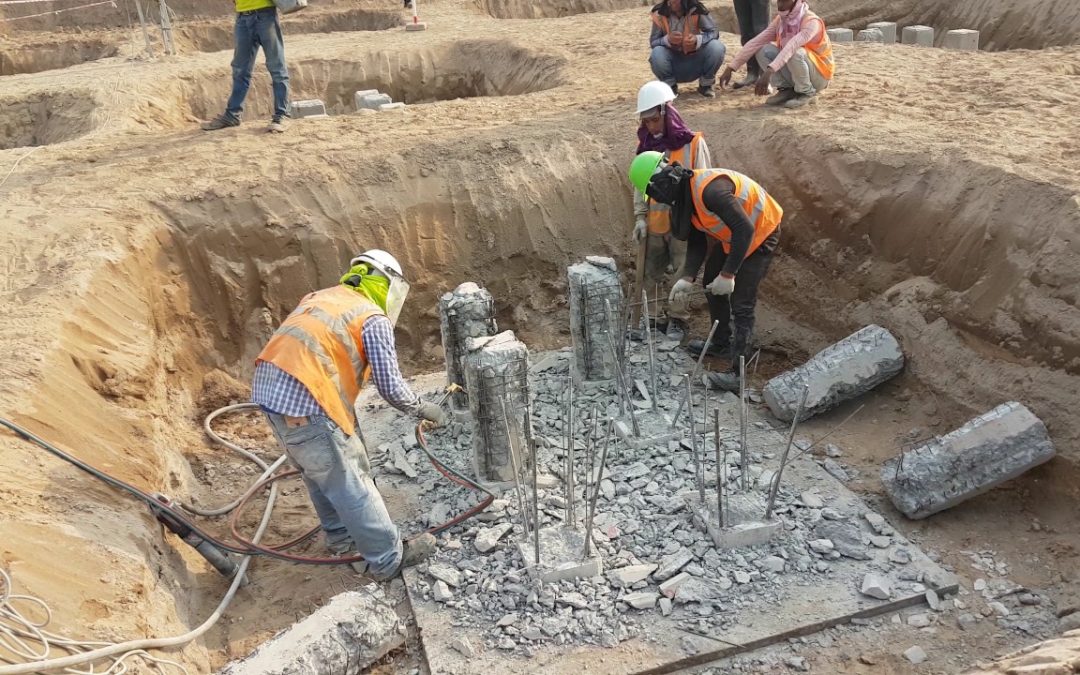Pile chipping specialized process used in construction and foundation works to remove the heads of concrete piles. This technique ensures precise and efficient removal, enabling the construction site to proceed smoothly. We will explore the concept of pile chipping, its benefits, and the steps involved in the process.
Understanding Pile Chipping:
Pile chipping involves the removal of the upper portion of a concrete pile, typically the protruding head, using specialized equipment and techniques. Here are some key aspects to consider:
Why is pile chipping necessary?
Pile chipping is necessary for various reasons, including:
Adjustments: Sometimes, the height of concrete piles needs to modify to align with the final construction design or accommodate specific requirements.
Reusability: In certain cases, concrete piles may remove and reused for other construction projects. Pile chipping allows for the extraction of the pile heads while preserving the integrity of the pile shafts.
c. Construction Progression: Pile chipping ensures that the construction site is ready for subsequent activities, such as pile cap installation or structural connections.
How is pile chipping carried out?
The process of pile chipping typically involves the following steps:
Preparation: Prior to pile chipping, safety measures establishe, including the use of personal protective equipment (PPE) and securing the work area. The type and condition of the concrete piles are assessed to determine the appropriate chipping method.
Equipment Setup: Specialized equipment such as pneumatic chippers or hydraulic breakers select and prepared for the chipping operation. The equipment position for optimal access to the pile heads.
Chipping Technique: The chipping tool is carefully guided to remove the pile head systematically. Operators control the equipment, adjusting the force and angle as needed to achieve the desired results. The process is carried out in a controlled manner to minimize damage to the remaining pile shaft.
Inspection and Finishing: Once the pile heads are removed, a visual inspection is conducted to ensure the desired level of removal has been achieved. Any necessary finishing work, such as smoothing or leveling, may be performed to prepare the pile tops for further construction activities.
Benefits of Pile Chipping:
Pile chipping offers several advantages, including:
Precision: The chipping process allows for the precise removal of the pile heads, ensuring accurate height adjustments and maintaining the structural integrity of the remaining pile shafts.
Efficiency: By using specialized equipment, pile chipping enables swift and efficient removal. Minimizing construction delays and optimizing the overall project timeline.
Cost-effectiveness: Pile chipping can cost-effective solution compared to alternative methods of pile head removal, providing savings in terms of time, labor, and material costs.
Reusability: When pile chipping performs carefully, it allows for the reuse of the pile shafts. Reducing waste and promoting sustainable construction practices.
Conclusion:
Pile chipping is a valuable technique in construction, facilitating the efficient removal of concrete pile heads. By understanding the process and its benefits. Construction professionals can effectively utilize pile chipping to adjust pile heights, enable construction progression, and promote cost-effective and sustainable project execution.

